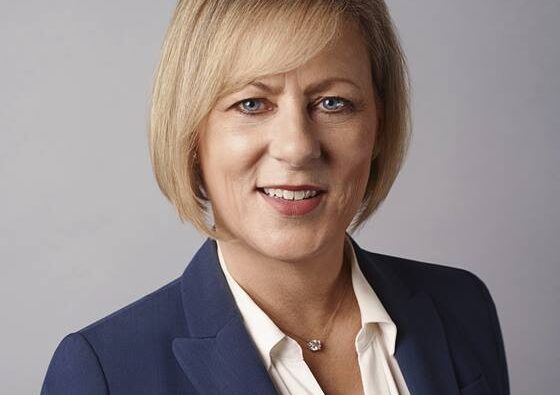Each progression of cellular technology, be it from 2G to 3G, and then, from 3G to 4G/LTE, has focused on two key aspects – how to make existing features better and more scalable and adding new features that can unleash new use cases, new experiences, and business models.
Rajen Vagadia is VP and President of Qualcomm India & SAARC. Rajen’s key responsibilities are to drive growth through carriers, OEMs and ecosystem partners. He oversees the entire regional sales and business organization with responsibility for all go-to market activities under the Qualcomm Technologies and Qualcomm Technologies Licensing businesses.
Rajen has close to 29 years of experience in the telecom industry, covering diverse areas in manufacturing, business development and sales, supply-chain & strategy.
I recently managed to have some time with Rajen Vagadia- VP and President, Qualcomm India & SAARC, to dive deeper into what the transition to 5G means, the possibilities that 5G holds in the post-pandemic era, and what Qualcomm is upto, beyond mobile.
The transition from 4G to 5G, is about higher performance, improved efficiency, and enabling a new kind of network that is designed to interconnect devices, machines, objects, and people. While the technology is built to provide multi-Gbps peak data speeds, it is not just speed that distinguishes 5G from previous generations of wireless technology. 5G opens myriad opportunities for many sectors including healthcare, education, security, and surveillance. 5G offers far greater reliability, ultra-low latency, increased availability, massive network capacity, and a smoother, more uniform experience for end-users. It is a big leap in wireless technology and lays the foundation for technology innovations in the future, across much wider gamut of verticals. Moreover, in the new normal that we now are expected to live with, it is critical that we have access to ultra-low latency in the sectors of education, healthcare, media, entertainment, and finance to name a few which will change the way we consume content, communicate our thoughts, and live our life.
Having said that, 5G will continue to coexist with 4G. With the addition of 5G infrastructure, it will not only provide better user experience to 5G consumers, it can also improve the user experience of 4G users as the operators will be able to offload the stressed 4G networks. Existing 4G spectrum can continue to be used for 4G or migrated to 5G or even deployed for dual use with technologies like Dynamic Spectrum Sharing (DSS), where the same spectrum is dynamically used by 5G and 4G, thereby offering the goodness of 5G on existing 4G spectrum, when and where needed. We have seen fast adoption of 5G across multiple geographies. 4G has served India’s broadband needs very well and is poised for 5G deployment to serve its growing broadband and other business requirements.
5G consumer and enterprise use cases
5G will redefine mobile experiences and enable generations to benefit from it – faster download speeds on mobile phones and connected 5G-laptops, real-time interactivity for consumers, enhanced entertainment, online multiplayer cloud gaming, etc. All this will be possible as 5G offers massive capacity and lower cost per bit for network operators.
From a use-case standpoint, 5G is expected to enable specialized use cases in manufacturing, energy, utilities, healthcare, pharmaceutical, transportation and logistics, some which have not yet been imagined too, as has been the case in the past G transitions. 5G will empower businesses to maximize their potential and benefit from the enhanced security, reliability, mobility, and flexibility it offers. It will also take consumer experience a few notches higher due to seamless connectivity on public private networks. Consumers will be able to do more in lesser time. In a nutshell, 5G is all set to change the world of technology from both, a consumer, and an enterprise standpoint, in a way that has not happened in any of the previous G transitions.
5G in remote healthcare and education
While the pandemic brought many activities to a grinding halt, it also opened new avenues for exchanging information. In India, this has been possible due to advancements in technology and the increasing affordable broadband penetration. Most of the broadband usage has happened over cellular technologies as the wireline infra-structure is very sparse.
5G fixed wireless broadband will enable fibre like connectivity wirelessly, without having to manage complexity of right-of-way and web of wires. That will offer multi-gigabit connectivity to the homes and enterprises, which are today deprived of this necessity, because of challenges of laying fiber. This will drive innovations in the sphere of education and enable access to quality education even in the rural parts of the country. For instance, with 5G-based technologies, students can virtually be transported to a classroom or a laboratory, and learn from the best teachers across the globe. This will democratize education. 5G will help telcos in solving some fundamental issues of infrastructure viz. fiber-replacement for connecting homes, connecting towers and rural broadband and help decongest their existing networks.
On the healthcare front, there has been a significant rise in online consultations since the pandemic began. Image based scans like CT, MRI, Sonography can now be remotely, real-time analyzed and opinion provided, for urgent attention, helping save lives. There is huge great potential for telemedicine in India and it can be maximized with the help of 5G. Furthermore, a combination of 5G, AI and XR (Extended Reality) technologies can be integrated into healthcare systems to serve multiple purposes including medical training, virtual consultation, and therapy.
5G potential to bridge the economic divide
Technology advancement is a major driver for economic growth. The rapid adoption of digital solutions contributes significantly to expanding economic opportunities in a region. The advent of 5G and AI in operations across industries will improve connectivity and offer new opportunities for development, even in rural areas. It will power new services and encourage infrastructure-building, enabling us to rapidly bridge the divide between urban and rural India.
The Covid-19 pandemic has emphasized the importance of connectivity in our lives. Today, from consumers to industries everyone is more connected that ever before. In such a scenario, 5G network will provide higher availability, reliability, and security than existing networks, directly impacting the economic growth. The 5G economy will also introduce a new area of consideration under policymaking and regulation as new business models emerge and industries continue to evolve on their digital transformation. Rural markets can now be quickly connected with the millimeter wave (mmW) spectrum that 5G will use. That now bring inclusive growth.
Why 5G is key for India’s Post-Pandemic Prospects
With the Covid-19 pandemic accelerating the digital journeys of industries across the world, almost every company is now becoming a digital company. Moreover, during the lockdown, technology has played a key role in keeping the people connected and safe. Connectivity technology helped the home, become the new office, school, theatre, gaming studio or enterprise.
The reliance on technology and devices grew significantly be it for entertainment, education, business, and services. A greater number of people were connected to the internet consuming content in various forms, but all of this was possible only due to the availability of the robust 4G network. During the height of the pandemic, technology came to the aid of delivering essential services to people. It also helped keep businesses running while their brick-and-mortar establishments were shut down. The improved speed, reliability, and security enabled by 5G will accelerate the growth of industries like education, healthcare, auto and transport, information communication technology, and manufacturing, which are the backbone of the economy and vital for its growth.
5G will help change the way we consume content and will help businesses deliver better. The flexibility offered by 5G technologies will help businesses in scaling up solutions and applications to address growing customer needs and support the evolution of their business models. It will also enable enterprise-grade security, increased privacy, and ultra-fast remote connections to Cloud platforms. 5G will be the platform for innovations and R&D efforts. In short, 5G will become critical for battling similar situations in the future, offering better comforts, health and safety to all of us.
Key focus areas for Qualcomm going forward
Qualcomm works on designing the end-to-end system. That goes for designing 5G platforms which intelligently work together to deliver high cellular speeds, enhanced coverage, better security, and greater power efficiency.
Now that with 5G, everything, everywhere and everyone can get connected we have opportunity to help all the verticals beyond mobile phones. For instance, the Snapdragon Automotive 5G Platform is our first automotive-grade 5G platform, optimized to provide highly accurate location positioning with a comprehensive, anytime-anywhere 3D navigation solution. We have also developed the world’s first fully integrated high-power mmWave antenna module for 5G fixed wireless access, which can offer rural and urban connectivity, where drawing fiber is a challenge.
Personal computers and laptops continue to be a strong focus area for us, where our 5G compute platforms enable greater speeds, longer battery life and slimmer formfactors. The Qualcomm 315 5G IoT modem offers premium gigabit-class performance and low-power thermal-efficient capabilities for developing industrial and enterprise applications in market segments such as automation, construction, energy, manufacturing, and mining.
Gaming is yet another major focus area for Qualcomm. Earlier this year, we forayed into esports with the first season of the Snapdragon conQuest tournament which witnessed participation from six hundred thousand plus gamers, across India. With 5G enabled cloud gaming, consumers will no longer require expensive console hardware; they will enjoy just as good an experience on their laptops and smartphones. We have recently launched the Snapdragon 888 Plus 5G platform, the Snapdragon 778G 5G Mobile Platform, and the Snapdragon X65/X62 5G Modem-RF Systems for advanced gaming experiences and better connectivity.



